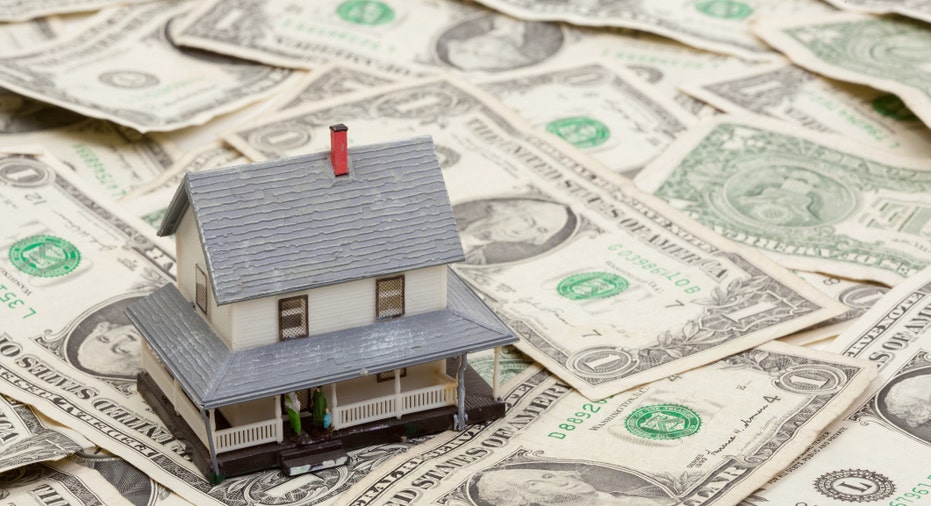Today's mortgage rates are astonishingly low — how to land the best refinance price

Scoring a lower interest rate on your mortgage could save you thousands of dollars. (iStock)
The coronavirus pandemic has wreaked havoc on the U.S. economy, leading the government to scramble to find ways to encourage spending and ease the strain on Americans' wallets.
A round of stimulus checks has already hit millions of bank accounts (for those who didn't receive one, there are some other options to consider). But that's not all — the CARES Act has also allowed federal student loan borrowers to delay payments until October 2020. And the Federal Reserve has slashed interest rates twice since March.
The emergency rate cuts led to record-low mortgage rates, making it a good time to consider refinancing your mortgage loan. To understand just how much you could save on monthly mortgage payments by refinancing now, crunch the numbers and compare rates using Credible's free online tool. Within minutes, you can see what multiple mortgage lenders are offering.
WHY IT'S A GOOD IDEA TO REFINANCE YOUR MORTGAGE WHILE RATES ARE LOW
What is today's mortgage rate?
Mortgage rates dropped to a new all-time low in late May to an average 3.15 percent for a 30-year fixed-rate and 2.62 percent for a 15-year fixed-rate, according to Freddie Mac. That’s down from a 4.06 percent average a year ago.
To give you an idea of your potential savings with the current mortgage interest rates, let’s take a look at a 30-year $300,000 loan with a 3.15 percent interest rate versus a 4.06 percent rate.
With a higher rate, your monthly payment would give you a monthly principal-and-interest payment of $1,443. If you could score the lower rate, however, your payment would be reduced to $1,018. That’s a savings of $138.67 per month and almost $50,000 over 30 years.
FED CUTS INTEREST RATES AGAIN — WHY YOU SHOULD REFINANCE DEBT NOW
Your actual savings can vary based on the current mortgage rates where you live and your creditworthiness. Visit Credible to compare rates and terms with several lenders in one place.
10-YEAR TREASURY YIELD HITS RECORD LOW: HERE'S HOW TO PROFIT
If you’re in a position to capitalize on low mortgage interest rates, then you're going to want to use all the tools available in order to lock in a low rate. Here are three ways you can land the best price and maximize your savings.
1. Shop around
One of the best ways to score a low-interest rate is to shop around and compare rates from multiple lenders. Even a slightly lower interest rate can spell hundreds or even thousands of dollars in savings over the life of your new loan.
Shopping around can be time-consuming, especially if you’re submitting applications for pre-approval with each lender individually. Mortgage brokers can help you shop around based on just one application, but they typically only work with specific lenders.
To save time and get quotes from multiple lenders in one place, Credible can get you pre-approved in three minutes and allow you to compare multiple lenders and rates in one place.
2. Build your credit score
It’s impossible to say exactly how a specific credit score can impact your interest rate. But in general, the higher your credit score, the lower your interest rate is likely to be on a mortgage refinance loan.
If you want to save on mortgage payments, it’s important to build your credit before you apply. If your credit is already in great shape, you may just need to maintain it by continuing to make your debt payments on time, keeping your credit card balances low and avoiding new credit applications.
HOW TO INCREASE YOUR CREDIT SCORE FAST
But if your credit score needs some work, take some time to check your credit report and address potential issues that could hurt your chances of taking advantage of record-low mortgage interest rates.
You can check your credit report from each of the national credit bureaus every 12 months for free at AnnualCreditReport.com. If you’re not sure where to start on improving your credit score, the best places to start include:
- Get caught up on past-due payments and stay current going forward.
- Reduce your credit card balances and keep them as low as possible.
- Avoid taking out new credit unless it’s necessary.
- Check your credit report for errors and dispute them with the credit bureaus.
This process can take time, but the savings from a low-interest rate can be worth it.
3. Be prepared to act quickly
With the volatility of the market there’s no guarantee that mortgage interest rates will remain where they are — they could go higher or even lower than where they are now. As such, it’s important to be prepared to act quickly and lock in a rate once you find one that helps you achieve your financial goals.
Many lenders typically allow you to lock in a rate for 60 days, but some may go even longer than that. Pay attention to current mortgage rates and take advantage of rate locks to avoid missing out on savings.
The bottom line
The coronavirus pandemic has caused financial difficulties for millions of Americans, but it’s also presented an opportunity for some to save on mortgage payments through lower mortgage interest rates. If you’re in a position to refinance and it makes sense for your financial situation, these tips can help you save as much as possible.